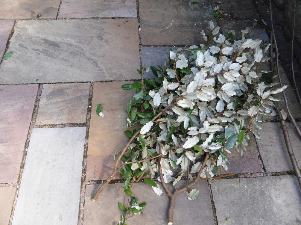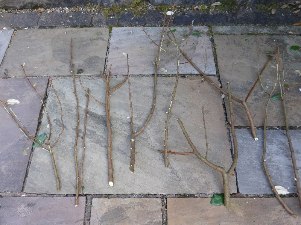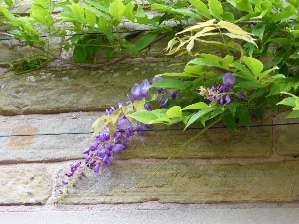Free garden Stakes
Posted on
|
It is about this time of year I realise my perennial mistake, I have not staked and supported enough plants in the border and they are a horticultural collison as summer moves on. It's not just the tall plants like the Delphinium, but shorter plants such as Crocosmia which if planted close to another plant or path will flop over if not staked. Every year I visit a show garden which has been carefully staked which evidences my own failings. Plant stakes are also expensive and in truth I think some of the metal stakes look intrusive in a flower border. If you are pruning shrubs at this time of year, or anytime, look at the pruning off cuts to see if they may make decent plant stakes. Natural wooden stakes look nice in the border, and they are free. I needed to prune back an Elaeagnus which had over grown it's alloted space. I wanted to keep the top growth for height and privacy but trim out some of the lower branches. As a mature shrub there was a good bit to trim off and the image top right shows the pruning cuttings. I then stripped off the leaves and trimmed the branches. The image bottom left shows the branches which will make ideal stakes for some of the lower growing plants such as Crocosmia, Oregano and the hardy Geraniums. |
 |
 |



